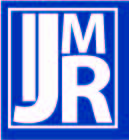Acclimatization of mHealth Applications, Wireless Sensors, IoT in Healthcare: Focusing on Patient Privacy and Security in Legal Scenario
 Abstract views: 221
/
Abstract views: 221
/  PDF downloads: 102
PDF downloads: 102
DOI:
https://doi.org/10.61705/bd6rw662Keywords:
mHealth, Wireless Sensors, IoT, Blockchain, Legal ScenarioAbstract
A new age of data-driven patient care has been brought about by the integration of wireless sensors and Internet of Things (IoT) technology in the healthcare industry. This paper explores the changing dynamics of healthcare with an emphasis on the integration of wireless sensors and the Internet of Things, highlights the critical issues of patient security and privacy. A fine balance between innovation and protecting private patient data is essential as these technologies become more and more common in healthcare settings. The paper focus on the integration of wireless sensors and Internet of Things (IoT) technology in healthcare, with a particular emphasis on resolving patient privacy and security issues, is briefly summarized. The disruptive effect of integrating these technologies in healthcare dynamics is examined in this paper, which also highlights important factors to protect patient privacy, including decentralized storage, enhanced encryption, and regulatory compliance. It explores the security controls put in place within the Internet of Things ecosystem and looks at cutting-edge technologies as creative fixes, such as federated learning and blockchain. In order to strike a careful balance between medical innovation and morality, it emphasizes the value of user empowerment through open communication and systems for informed consent.
References
Algarni, A. (2019). A survey and classification of security and privacy research in smart healthcare systems. IEEE Access, 7, 101879-101894.
Singh, B. (2023). Tele-Health Monitoring Lensing Deep Neural Learning Structure: Ambient Patient Wellness via Wearable Devices for Real-Time Alerts and Interventions. Indian Journal of Health and Medical Law, 6(2), 12-16.
Thuemmler, C., & Bai, C. (2017). Health 4.0: Application of industry 4.0 design principles in future asthma management. Health 4.0: How virtualization and big data are revolutionizing healthcare, 23-37.
Singh, B. (2024). Legal Dynamics Lensing Metaverse Crafted for Videogame Industry and E-Sports: Phenomenological Exploration Catalyst Complexity and Future. Journal of Intellectual Property Rights Law, 7(1), 8-14.
Taimoor, N., & Rehman, S. (2021). Reliable and resilient AI and IoT-based personalised healthcare services: A survey. IEEE Access, 10, 535-563.
Singh, B. (2023). Blockchain Technology in Renovating Healthcare: Legal and Future Perspectives. In Revolutionizing Healthcare Through Artificial Intelligence and Internet of Things Applications (pp. 177-186). IGI Global.
Jiang, L. (2021). IoT Sensors for Smart Health Devices and Data security in Healthcare.
Singh, B. (2023). Federated Learning for Envision Future Trajectory Smart Transport System for Climate Preservation and Smart Green Planet: Insights into Global Governance and SDG-9 (Industry, Innovation and Infrastructure). National Journal of Environmental Law, 6(2), 6-17.
Rajamäki, J., & Hummelholm, A. (2022). Ethical Resilience Management Framework for Critical Healthcare Information Infrastructure.
Sharma, A., & Singh, B. (2022). Measuring Impact of E-commerce on Small Scale Business: A Systematic Review. Journal of Corporate Governance and International Business Law, 5(1).
Qiu, J., Liang, X., Shetty, S., & Bowden, D. (2018, September). Towards secure and smart healthcare in smart cities using blockchain. In 2018 IEEE international smart cities conference (ISC2) (pp. 1-4). IEEE.
Singh, B. (2022). Relevance of Agriculture-Nutrition Linkage for Human Healthcare: A Conceptual Legal Framework of Implication and Pathways. Justice and Law Bulletin, 1(1), 44-49.
Nyangaresi, V. O., Abduljabbar, Z. A., Mutlaq, K. A. A., Hussain, M. A., & Hussien, Z. A. (2022). Forward and Backward Key Secrecy Preservation Scheme for Medical Internet of Things. In Human-Centric Smart Computing: Proceedings of ICHCSC 2022 (pp. 15-29). Singapore: Springer Nature Singapore.
Kitchin, R. (2016). Getting smarter about smart cities: Improving data privacy and data security.
Kumar, P., Singh, A., & Sengupta, A. (2022). Securing Cyber-Resilience in Healthcare Sector. In Cyber Security in Intelligent Computing and Communications (pp. 211-226). Singapore: Springer Singapore.
Singh, B. (2019). Profiling Public Healthcare: A Comparative Analysis Based on the Multidimensional Healthcare Management and Legal Approach. Indian Journal of Health and Medical Law, 2(2), 1-5.
Razzaq, M. A., Gill, S. H., Qureshi, M. A., & Ullah, S. (2017). Security issues in the Internet of Things (IoT): A comprehensive study. International Journal of Advanced Computer Science and Applications, 8(6).
Soni, P., Pradhan, J., Pal, A. K., & Islam, S. H. (2022). Cybersecurity attack-resilience authentication mechanism for intelligent healthcare system. IEEE Transactions on Industrial Informatics, 19(1), 830-840.
Solangi, Z. A., Solangi, Y. A., Chandio, S., bin Hamzah, M. S., & Shah, A. (2018, May). The future of data privacy and security concerns in Internet of Things. In 2018 IEEE International Conference on Innovative Research and Development (ICIRD) (pp. 1-4). IEEE.
Additional Files
Published
Issue
Section
License
Copyright (c) 2024 International Journal of Medical Research

This work is licensed under a Creative Commons Attribution 4.0 International License.
All papers should be submitted electronically. All submitted manuscripts must be original work that is not under submission at another journal or under consideration for publication in another form, such as a monograph or chapter of a book. Authors of submitted papers are obligated not to submit their paper for publication elsewhere until an editorial decision is rendered on their submission. Further, authors of accepted papers are prohibited from publishing the results in other publications that appear before the paper is published in the Journal unless they receive approval for doing so from the Editor-In-Chief.
IJMR open access articles are licensed under a Creative Commons Attribution-ShareAlike 4.0 International License. This license lets the audience to give appropriate credit, provide a link to the license, and indicate if changes were made and if they remix, transform, or build upon the material, they must distribute contributions under the same license as the original.




